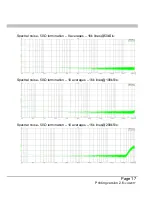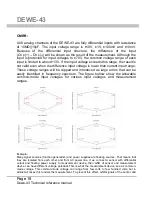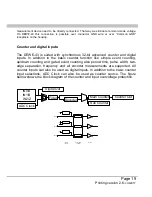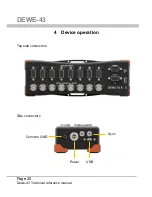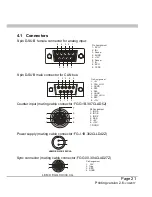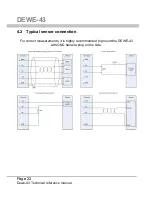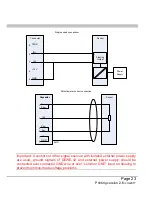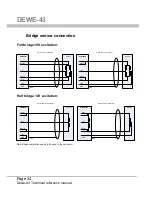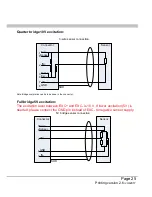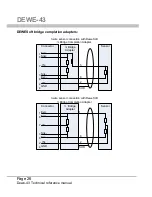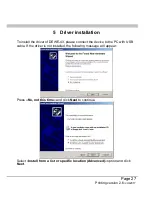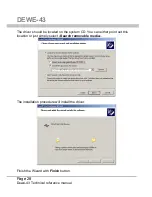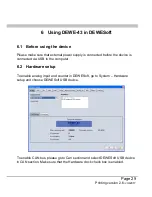
Page 15
Printing version 2.6
•JUL2017
The ADC samples at 64, 128 or 256 times the data rate (depending on the
adjusted sample rate). Frequency components above one half of the
oversampling rate (> 32, 64 or 128) can alias. Most of this frequency range is
rejected by the digital filter. The filter can not reject components that lie close to
integer multiples of the oversampling rate because it can not differentiate these
components from components between 0 Hz and the Nyquist frequency. That
means, if the sample rate is 100 kS/s and a signal component is between 50 kHz
and 12.8 MHz (128 x 100 kHz), this signal will be aliased into the passband
region of the digital filter and is not rejected. The analog filter removes these
components before they get to the digital filter and the sampler.
If aliasing is caused by a clipped or overranged waveform, (exceeding the voltage
range of the ADC) it can’t be rejected with any filter. The ADC assumes the
closest value to the actual value of the signal in its digital range when the signal
is clipping. The result of clipping is also a sudden change in the signal slope and
results in corrupt digital data with high-frequency energy. This energy is spread
over the complete frequency spectrum and is aliased back into the baseband. Do
not allow the signal to exceed the input range to avoid this.

















